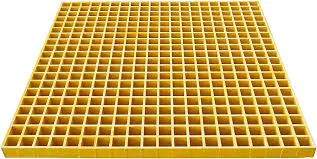
-
 Afrikaans
Afrikaans -
 Albanian
Albanian -
 Amharic
Amharic -
 Arabic
Arabic -
 Armenian
Armenian -
 Azerbaijani
Azerbaijani -
 Basque
Basque -
 Belarusian
Belarusian -
 Bengali
Bengali -
 Bosnian
Bosnian -
 Bulgarian
Bulgarian -
 Catalan
Catalan -
 Cebuano
Cebuano -
 China
China -
 China (Taiwan)
China (Taiwan) -
 Corsican
Corsican -
 Croatian
Croatian -
 Czech
Czech -
 Danish
Danish -
 Dutch
Dutch -
 English
English -
 Esperanto
Esperanto -
 Estonian
Estonian -
 Finnish
Finnish -
 French
French -
 Frisian
Frisian -
 Galician
Galician -
 Georgian
Georgian -
 German
German -
 Greek
Greek -
 Gujarati
Gujarati -
 Haitian Creole
Haitian Creole -
 hausa
hausa -
 hawaiian
hawaiian -
 Hebrew
Hebrew -
 Hindi
Hindi -
 Miao
Miao -
 Hungarian
Hungarian -
 Icelandic
Icelandic -
 igbo
igbo -
 Indonesian
Indonesian -
 irish
irish -
 Italian
Italian -
 Japanese
Japanese -
 Javanese
Javanese -
 Kannada
Kannada -
 kazakh
kazakh -
 Khmer
Khmer -
 Rwandese
Rwandese -
 Korean
Korean -
 Kurdish
Kurdish -
 Kyrgyz
Kyrgyz -
 Lao
Lao -
 Latin
Latin -
 Latvian
Latvian -
 Lithuanian
Lithuanian -
 Luxembourgish
Luxembourgish -
 Macedonian
Macedonian -
 Malgashi
Malgashi -
 Malay
Malay -
 Malayalam
Malayalam -
 Maltese
Maltese -
 Maori
Maori -
 Marathi
Marathi -
 Mongolian
Mongolian -
 Myanmar
Myanmar -
 Nepali
Nepali -
 Norwegian
Norwegian -
 Norwegian
Norwegian -
 Occitan
Occitan -
 Pashto
Pashto -
 Persian
Persian -
 Polish
Polish -
 Portuguese
Portuguese -
 Punjabi
Punjabi -
 Romanian
Romanian -
 Russian
Russian -
 Samoan
Samoan -
 Scottish Gaelic
Scottish Gaelic -
 Serbian
Serbian -
 Sesotho
Sesotho -
 Shona
Shona -
 Sindhi
Sindhi -
 Sinhala
Sinhala -
 Slovak
Slovak -
 Slovenian
Slovenian -
 Somali
Somali -
 Spanish
Spanish -
 Sundanese
Sundanese -
 Swahili
Swahili -
 Swedish
Swedish -
 Tagalog
Tagalog -
 Tajik
Tajik -
 Tamil
Tamil -
 Tatar
Tatar -
 Telugu
Telugu -
 Thai
Thai -
 Turkish
Turkish -
 Turkmen
Turkmen -
 Ukrainian
Ukrainian -
 Urdu
Urdu -
 Uighur
Uighur -
 Uzbek
Uzbek -
 Vietnamese
Vietnamese -
 Welsh
Welsh -
 Bantu
Bantu -
 Yiddish
Yiddish -
 Yoruba
Yoruba -
 Zulu
Zulu
Exploring FRP Fittings for Enhanced Performance and Durability in Modern Applications
Understanding FRP Fittings Revolutionizing Construction and Infrastructure
Fiber Reinforced Polymer (FRP) fittings have become a game-changer in the construction and infrastructure industry, providing innovative solutions to long-standing challenges associated with traditional materials. As projects demand increased durability, sustainability, and efficiency, FRP fittings have emerged as a favored choice among engineers and builders. This article explores the key aspects of FRP fittings, including their composition, advantages, applications, and future potential.
What are FRP Fittings?
FRP fittings consist of a polymer matrix reinforced with fibers — typically glass, carbon, or aramid. These materials combine to create a lightweight yet strong alternative to traditional fittings made from metals and concrete. The manufacturing process involves impregnating the reinforcing fibers with a polymer resin, which is then cured to form a solid and durable structure. This composite material can be shaped into various fittings, including elbows, tees, flanges, and custom components, catering to specific design and performance requirements.
Advantages of FRP Fittings
1. Corrosion Resistance One of the most significant advantages of FRP fittings is their resistance to corrosion. Unlike traditional metals that can oxidize and deteriorate over time, FRP fittings maintain their integrity in harsh environments. This property makes them ideal for applications in wastewater treatment, chemical processing plants, and marine environments where exposure to corrosive substances is prevalent.
2. Lightweight FRP fittings are considerably lighter than their metal or concrete counterparts, which translates to easier handling and installation. This lightweight nature reduces transportation costs and allows for more efficient labor utilization on-site.
3. High Strength-to-Weight Ratio Despite their lightweight nature, FRP fittings boast impressive strength. They can withstand considerable stress and load, making them suitable for demanding structural applications where safety and performance are paramount.
4. Design Flexibility The manufacturing process of FRP fittings allows for greater design flexibility. Engineers can craft fittings in various shapes and sizes to fit the specific requirements of a project, reducing the need for additional customization or modifications.
5. Thermal Insulation FRP materials have excellent thermal insulating properties, making them suitable for applications where temperature regulation is essential. This feature helps to minimize energy loss and can contribute to overall sustainability goals.
frp fitting

6. Durability FRP fittings exhibit exceptional durability, with a long service life that reduces the need for frequent replacements. This longevity contributes to lower lifecycle costs, making them a wise investment for construction projects.
Applications of FRP Fittings
FRP fittings find applications across various sectors, reflecting their versatility and performance capabilities
- Infrastructure In the construction of bridges, tunnels, and buildings, FRP fittings are used to create lightweight, strong connections that improve overall infrastructure resilience.
- Oil and Gas In the oil and gas industry, FRP fittings are employed in pipelines and equipment exposed to corrosive environments, helping to protect against leaks and structural failures.
- Water Management FRP fittings are gaining traction in water treatment facilities, irrigation systems, and desalination plants due to their resistance to erosion and chemical impacts.
- Marine Applications The marine industry values FRP fittings for boat construction and maintenance, where resistance to saltwater and other environmental factors is critical.
Future of FRP Fittings
As sustainability becomes increasingly prioritized in construction and manufacturing, the potential for FRP fittings continues to grow. Innovations in production techniques and material science are set to enhance their performance characteristics and broaden their applications. Moreover, as regulatory frameworks shift towards greener materials, FRP fittings are well-positioned to play a critical role in reducing the environmental footprint of construction projects.
In conclusion, FRP fittings represent a significant advancement in construction material technology. Their unique properties, coupled with the growing emphasis on sustainability and durability, make them an attractive option for modern engineering challenges. As the industry continues to innovate, FRP fittings will undoubtedly play a crucial role in shaping the future of infrastructure development.









